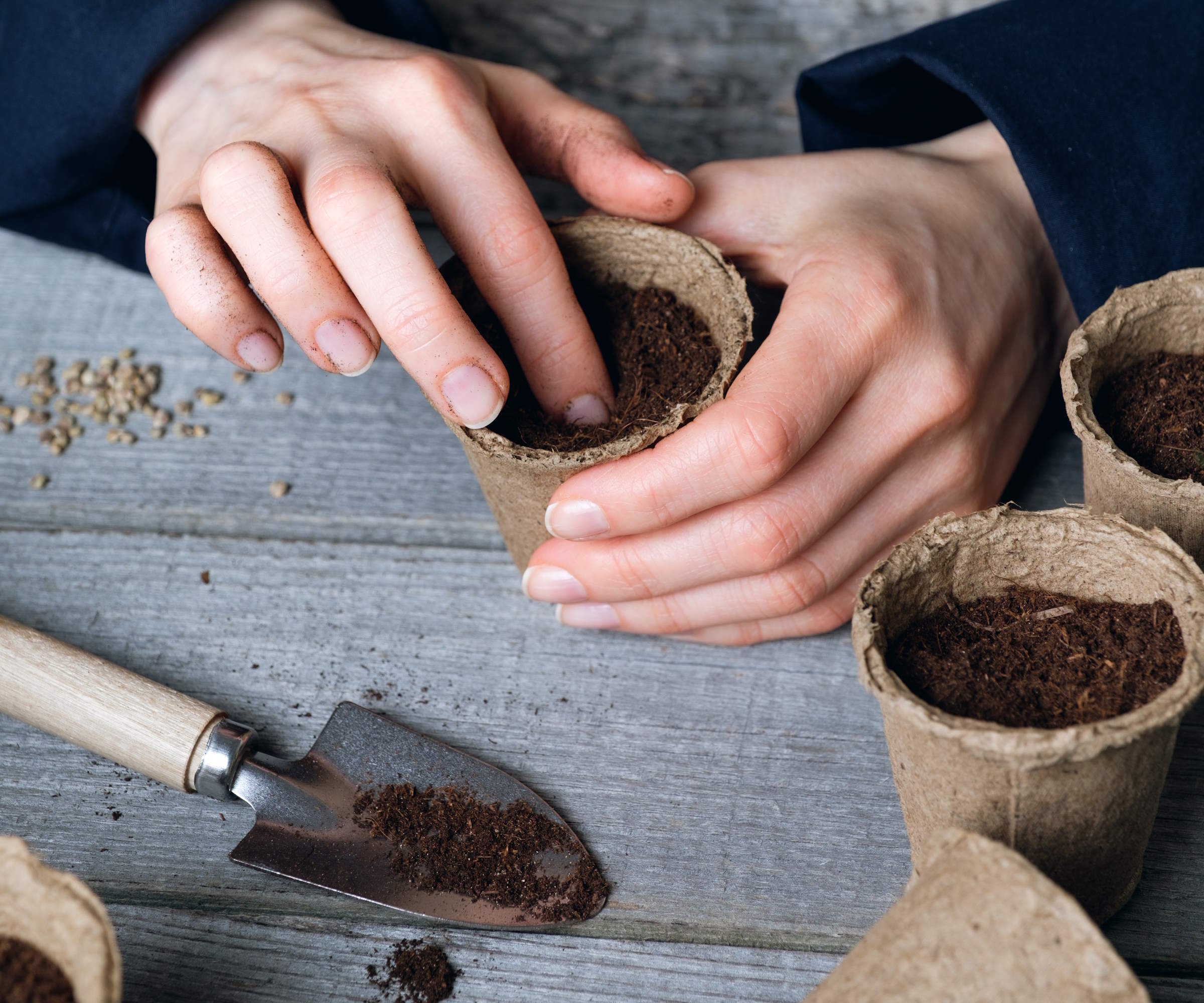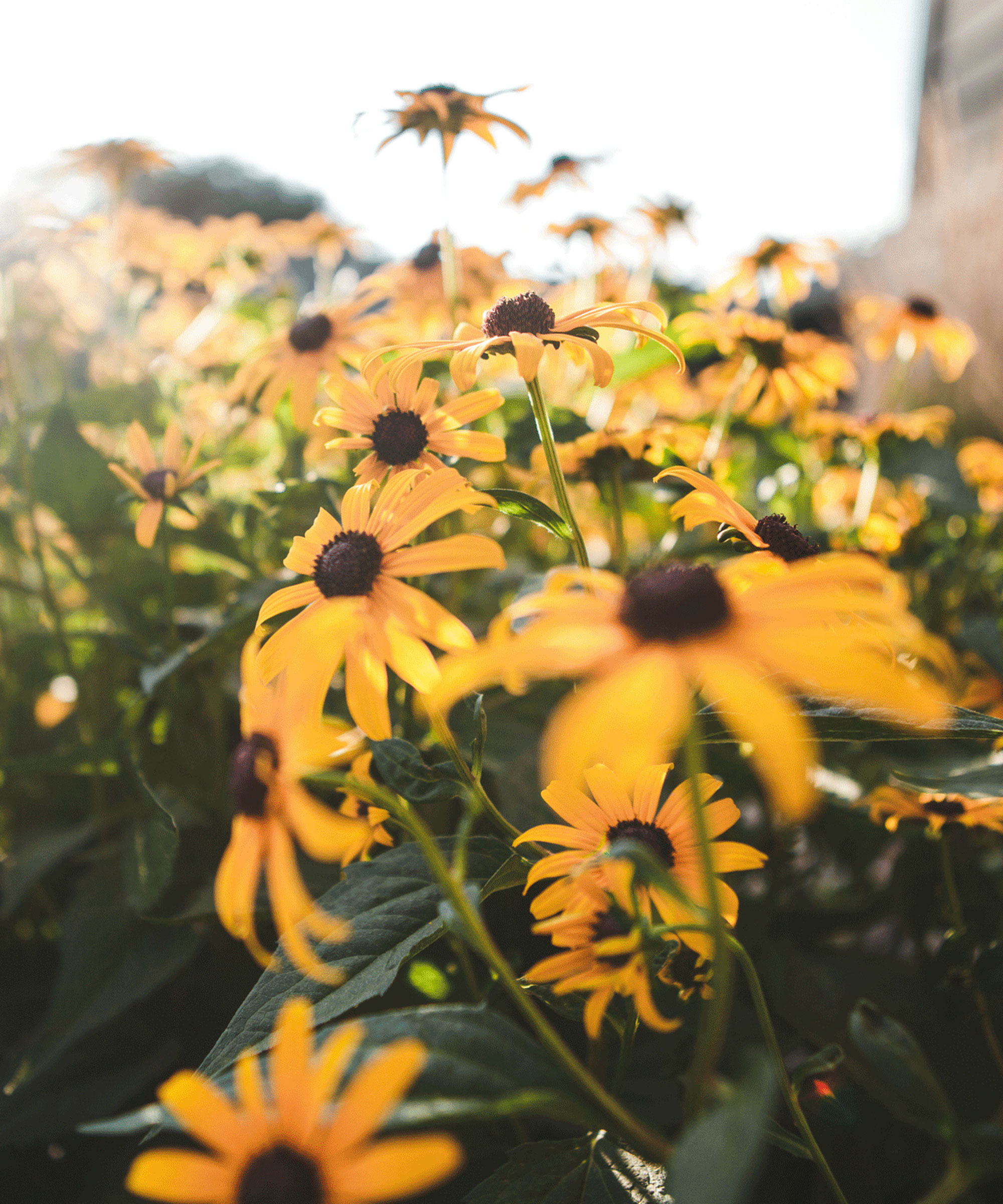
Black-eyed Susans are a group of fantastic and reliable flowering perennials and annuals that can bloom throughout summer and into fall. Also commonly known as rudbeckias, they are typically daisy-like yellow flowers with black centers - but come in other colors too.
The US native wildflower is hardy in zones 3-11 and easy to grow in any backyard, whether you buy plants or go down the simple and satisfying route of sowing seeds. It can be an enjoyable and rewarding experience to see black-eyed Susans bloom knowing that you sowed the seeds and raised the plants successfully. I have done it and would thoroughly recommend it to any other gardener.
If you want to propagate your black-eyed Susans, we want to help. We take a focused look and hear from two flower experts about how and when they recommend planting black-eyed Susan seeds.

How to plant black-eyed Susans
Black-eyed Susan plants are commonly available to purchase as seedlings and plants from nurseries, garden centers, and online. This offers a quick and easy route to add these fantastic plants to your backyard ideas. A budget-friendly alternative is to grow the plants yourself from seed and you are likely to find a broad range of varieties available to grow in this way.
There is a wide selection of black-eyed Susans to grow, coming in various warm fall tones. Holly Heider Chapple, floral designer and owner of Hope Flower Farm, recommends looking at the ‘unique varieties’ you can get. She says: ‘My favorite is a red called Cherry Brandy, I also love Cherokee Sunset, Irish Eyes, Green Eyes, Henry Eilers, and Maya. It is a species that has some delightful alternatives to the stereotypical black-eyed Susan.’
A compact rudbeckia that produces 18-24 inch tall uprights boasting 3-4 inch semi-double cherry red blooms.
Cherokee produces 24-30 inch plants covered in 3-5 inch blooms with sunset petals with bronzed yellow tips.
Rudbeckia hirta produces the classic black-eyed Susans, featuring the daisy-like yellow flowers with black centers.
When to plant black-eyed Susan seeds

Black-eyed Susans can be grown from seed both indoors or outdoors. Whichever you opt for may depend on your climate and growing space. Though there is such a fantastic variety of black-eyed Susans to grow it is worth adding them to any seed sowing schedule, wherever you intend to sow the seeds.
However, there are certainly advantages to sowing the seeds indoors to get an early start on the growing season. Starting black-eyed Susans in a warm and protected environment, such as a greenhouse or warm windowsill, means you can get strong, healthy plants and earlier blooms.
‘For sowing black-eyed Susans, it's best to sow seeds indoors roughly 5-7 weeks before the last spring frost for your area,’ advises Meredith Bishop, flower grower and owner of Bloom & Bounty.
‘This will allow the seedling time to develop a robust root system that will easily transplant into the garden after all risk of frost has passed.’
Holly Heider Chapple also prefers starting black-eyed Susan seeds in trays or pots. As well as ensuring the plant’s ‘establish a good root structure’ before being planted outside, she adds: ‘It is also helpful to ensure proper watering and care of the seedling as it develops. It is easy to lose baby plants out in your formal gardens.’
Black-eyed Susans can be sown directly outdoors into the garden. It is important to wait until all risk of frost has passed and the soil temperatures are around 70°F in spring to sow seeds outdoors successfully. The timing for this will vary, but can be anytime between March and May depending on your location and US hardiness zone.
How to plant black-eyed Susan seeds

An important first step to successfully planting perennial black-eyed Susan seeds is to give them a period of cold stratification.
Seed packets will often say they benefit from stratification and, while it may sound confusing, it is simple and not stratifying seeds would be a seed-sowing mistake that will affect germination. It can be as easy as keeping your black-eyed Susan seeds in a refrigerator for a few weeks before planting.
Fill trays, modules, or pots with potting soil designed to start seeds in and sprinkle the seeds over the compost. Meredith Bishop advises that ‘seeds need light to germinate, so cover only lightly with soil’ or vermiculite and she also recommends only to ‘mist or bottom water to avoid disrupting the seed's position until germination’.
You can water plants from the bottom by setting the container in a tray of water, allowing the soil to soak in only the required moisture. It is a good way to avoid overwatering seeds or seedlings in trays or modules.
Black-eyed Susan seeds ideally want temperatures of 68-77°F for effective germination and to be kept moist as they develop, but not waterlogged.
Seedlings can be potted up once they are large enough to handle and planted out into the backyard after a period of hardening off once the risk of frosts has passed and the soil temperature is 70°F. Holly Heider Chapple recommends waiting until it has ‘established a solid root structure and is a fairly nice-sized plant’ before planting it in the garden.
To direct sow black-eyed Susan seed outdoors once the soil has warmed up in spring, prepare the area by weeding it carefully and raking level. Scatter the seeds over the area, or sow in rows at least 12 inches apart, and cover with a thin layer of soil.
Keep the soil moist - using a fine spray attachment on a hose or a watering can with a fine rose, available at Amazon, to avoid disturbing the seeds. Deterrents or slug control methods, such as beer traps or barriers with rough surfaces like eggshells or gravel, can be used around plants to prevent pests from nibbling seedlings as they appear.
Thin the black-eyed Susan seedlings to 12-30 inches apart, depending on the plant’s ultimate size - always refer to seed packets for the recommended spacings for any particular variety. Meredith Bishops advises giving plants lots of space, as overcrowded black-eyed Susans are ‘liable to spread fungus from plant to plant’.
A premium organic potting mix that is specially formulated to grow seedlings and cuttings.
FAQs
Can I just scatter black-eyed Susan seeds onto soil?
You can scatter black-eyed Susan seeds over the soil, however, it is recommended to follow up by giving the seeds a slight covering of soil. Scattering the seeds will mean it is important to thin the resulting seedlings to give plants the right space to grow to full size.
Do I need to soak black-eyed Susan seeds?
Annual varieties of black-eyed Susan do not need a period of stratification ahead of sowing. The germination of these can be boosted by soaking the seeds in warm water overnight, however, it is not a necessity.
How long does it take for black-eyed Susan to grow from seed?
Black-eyed Susan seeds should germinate within 10-14 days when sown indoors in a warm and protected environment.
Black-eyed Susans are known for self-seeding around the garden. Deadheading and cutting back black-eyed Susans can help prevent them from spreading too much. If you want more plants, but to control where they grow, consider collecting seeds from your plants and you can sow these free seeds the following spring.







